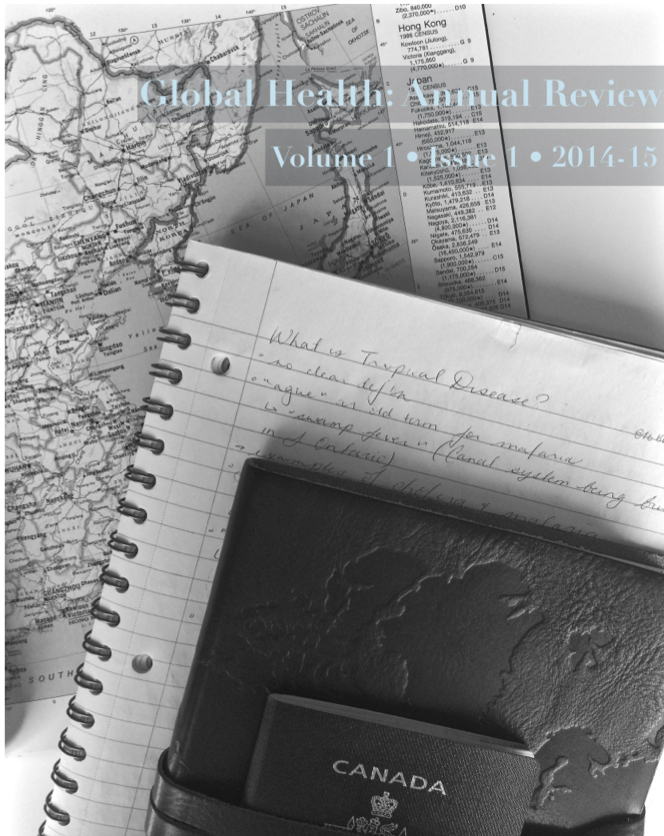Using the Declaration of Alma Ata’s definition of total health to understand the barriers impeding equitable and effective rotavirus vaccination in LMICs
Résumé
Rotavirus infections are the most severe form of acute diarrhea in children around the world (1, 2). The introduction of rotavirus vaccines, such as RotateqTM (manufactured by Merck & Co.) and RotarixTM (manufactured by GlaxoSmithKline Biologicals), has helped address the rotavirus morbidity burden in developed areas (3,4). However, these vaccines have demonstrated to be less efficacious and effective in LMICs (5, 6). The reasons for the discrepancy in health equity between high-income countries and LMICs can be understood when reviewed under the framework of the Declaration of Alma Ata. Under this declaration, total health includes not only physical aspects of health, but also economic, political, and social aspects (7). By analyzing the physical, economic, political, and social aspects of society and healthcare affecting rotavirus vaccination the challenges impeding LMICs from receiving equitable rotavirus healthcare access can be understood. Challenges affecting rotavirus vaccination in LMICs include: reduced efficacy of presently licensed vaccines, limited financial and means to support vaccination programs, political barriers preventing vaccine implementation, issues regarding social acceptance of vaccination programs, and infrastructural limitations (8-12). These challenges must be clearly understood in order to be innovatively addressed so that not only the disparity in health equity regarding rotavirus infections is reduced, but also the global morbidity and mortality burden of rotavirus infections.
Background: Diarrheal diseases, because of barriers to necessary healthcare treatments and prevention strategies, disproportionately affect LMICs. The rotavirus is the leading cause of severe diarrhea in children under the age of five; between 352,000 and 592, 000 deaths occur each year because of rotavirus infections (2).
The introduction of rotavirus vaccines, such as RotateqTM (manufactured by Merck & Co.) and RotarixTM (manufactured by GlaxoSmithKline Biologicals), has helped address the rotavirus morbidity burden in developed areas (3). However, these vaccines have not proved to be as efficacious in developing areas3. The issues surrounding rotavirus vaccination in LMICs elucidates the disparity in health equity that is present in today’s world.
The Declaration of Alma-Ata highlights how equitable access, public participation, health promotion, appropriate technology, and intersectional cooperation are required for primary healthcare (7). By highlighting the interactions between the political, economic, social and health sectors of society the concepts of equitable total health outlined by the Declaration of Alma Ata can lead us to the understanding of how and why rotavirus infections affect those in LMICs more so than in high-income countries.
Methodology: A targeted literature review was conducted to critically analyze articles from a number of databases pertaining to the historical and current factors affecting the physical, economic, political and social aspects of healthcare affecting rotavirus vaccination in LMICs.
Findings: Challenges affecting rotavirus vaccination in LMICs include: reduced efficacy of presently licensed vaccines, limited financial means to support vaccination programs, political barriers preventing vaccine implementation, issues regarding social acceptance of vaccination programs, and infrastructural limitations (8-12). The reduced efficacy of presently licensed vaccines may be negatively affecting the decision to roll out these vaccines in the most heavily burdened areas. Without political support and involvement these economic challenges cannot be fully addressed. Finally, without the support of the public at large vaccination programs will not succeed.
Conclusion: Future research agendas should include innovative approaches to not only further vaccine development, but to also allow for LMICs to become more involved in vaccine development and manufacturing to help reduce costs.
Innovative ways to include governments in the development and decision-making process of vaccine programs, the engagement of the public during both the decision and implementation stages of rotavirus vaccine adoption, and innovative ways to avoid relatively simplistic infrastructural challenges are also required. In order for health equity regarding rotavirus infections to be realized total health must be understood and all sectors of societal health have to be innovatively addressed.
Références
1. MacIntyre J, McTaggart J, Guerreant RL, Goldfarb DM. Early childhood diarrhoeal diseases and cognition: are we missing the rest of the iceberg? Paediatri Int Child Health. 2014; 34(4):295- 307.
2. Parashar UM, Hummelman EG, Bresee JS, Miller MA, Glass RI. Global illness and deaths caused by rotavirus disease in children. Emerg Infect Dis. 2003; 9(5):565-572.
3. Bhan M, Glass RI, Ella KM, Bhandari N, Boslego J, Greenberg HB, et al. Team science and the creation of a novel rotavirus vaccine in India: a new framework for vaccine development. The Lancet. 2014; 383:2180-2183.
4. Velásquez DE, Parashar UD, Jiang B. Strain diversity plays no role in the varying efficacy of rotavirus vaccines: An overview. Infect Genet Evol. 2014; 28:561-571.
5. Armah GE, Binka FN. Sustaining rotavirus vaccination in Africa: Measuring vaccine effectiveness. The Lancet. 2014; 14:1031-1032.
6. Seheri LM, Mwenda JM, Page N. Conference Report: Report of the 7th African rotavirus symposium; 2012 Nov 8; Cape Town, South Africa. Vaccine. 2014; 32:6336-6341.
7. WHO. Declaration of Alma-Ata. The WHO [internet]. 1978 [cited 2014 Dec 21]. Available from: http://www.euro.who.int/__data/assets/pdf_file/0009/113877/E93944.pdf?ua=1
8. Obaro,S. Rotavirus vaccine efficacy in African and Asian countries. The Lancet. 2010; 376:1897.
9. Pagliusi S, Jain R. Vaccines, our shared responsibility. Vaccine. 2015; 33:2197-2202.
10. Abbott C, Tiede B, Armah G, Manhmoud A. Evaluation of cost-effectiveness of live oral pentavalent reassortant rotavirus vaccine introduction in Ghana. Vaccine. 2012; 30:2582-2587.
11. Brooks A, Cutts FT, Justice J, Walt G. Policy Study of Factors Influencing the Adoption of New and Underutilized Vaccines in Developing Countries. San Francisco, CA and London: University of California, and London School of Hygiene and Tropical Medicine; 1999.
12. Gordon WS, Jones A, Wecker J. Introducing multiple vaccines in low- and lower-middle-income countries: issues opportunities and challenges. Health Policy Plann. 2012; 27:ii17-ii26.
13. Enweronu-Laryea, CC, Boamah I, Sifah E, Diamenu SK, Armah G. Decline in severe diarrhea hospitalizations after the introduction of rotavirus vaccination in Ghana: a prevalence study. BMC Infect Dis. 2014; 14:431-436.


